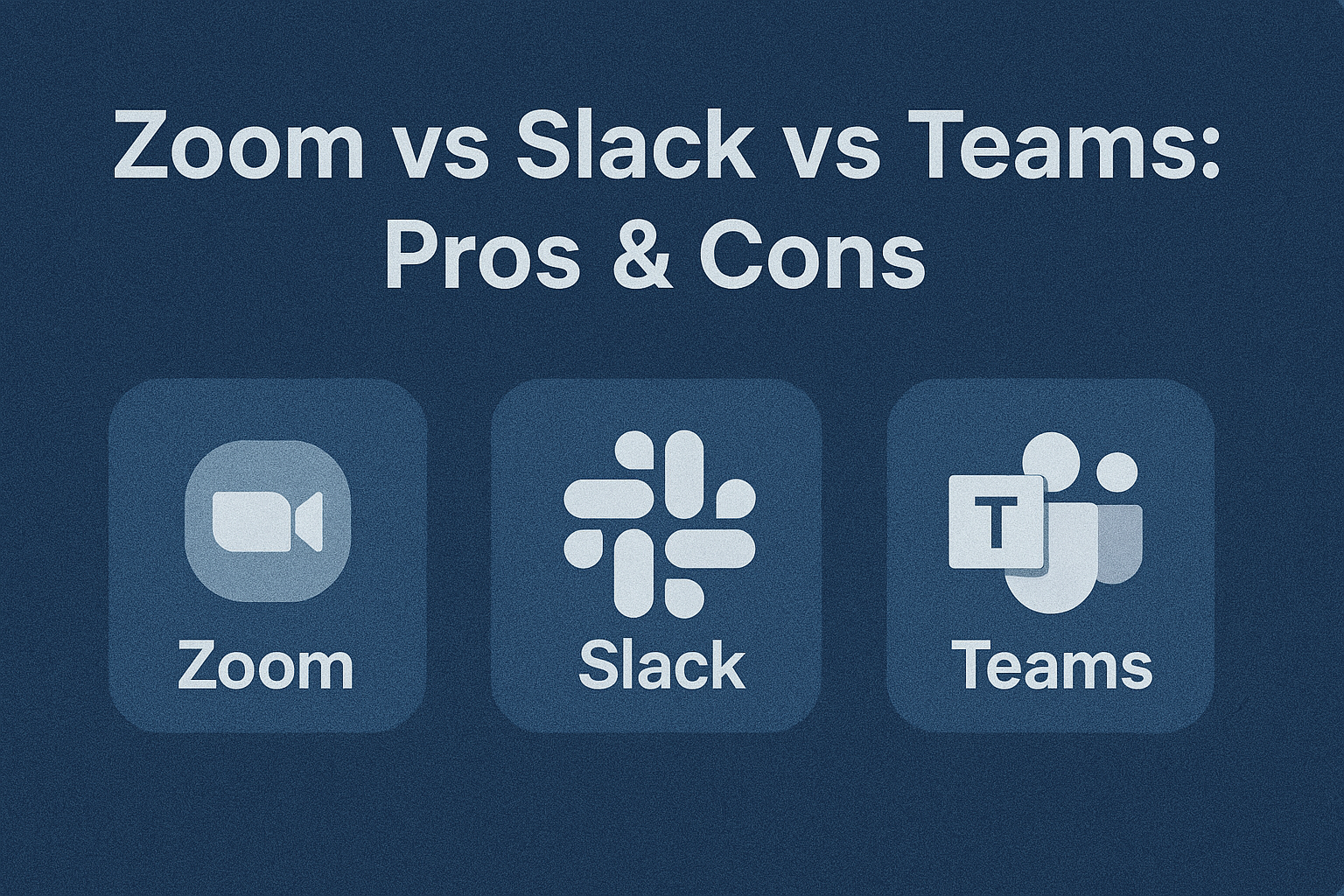When it comes to team communication and collaboration tools, Zoom, Slack, and Microsoft Teams are among the most popular platforms. Each tool offers a mix of features tailored for remote meetings, messaging, file sharing, and project coordination.
This article provides a straightforward comparison of the three platforms, covering their pros, cons, and a final verdict on which is better depending on your needs.
Contents
Zoom: Pros & Cons
Pros
- High-quality video conferencing: Zoom excels in delivering reliable and crisp video calls, even on low-bandwidth connections.
- Large meeting capacity: Paid plans support up to 1,000 participants.
- Breakout rooms: Ideal for workshops, online classes, and segmented group discussions.
- Wide integrations: Compatible with tools like Google Calendar, Slack, Trello, and more.
Cons
- Limited chat functionality: Zoom Chat is basic and lacks depth compared to Slack or Teams.
- Security concerns: Earlier concerns like “Zoombombing” have made some users cautious, though security has since improved.
- Lacks all-in-one workspace features: Zoom is not built for team collaboration beyond video meetings.
Slack: Pros & Cons
Pros
- Excellent for team messaging: Offers real-time communication through organized channels.
- Powerful integrations: Connects with over 2,000 apps including Google Drive, Zoom, and Jira.
- Searchable message history: Helps users locate past conversations easily (limited in free plan).
- Customizable workflows: Slackbots and workflow builder automate routine tasks.
Cons
- Limited built-in video calling: Video and audio calls are available but less robust than Zoom or Teams.
- Notification overload: Without good channel management, it can become noisy and distracting.
- Expensive for larger teams: Pricing scales quickly with team size, especially if full features are needed.
Microsoft Teams: Pros & Cons
Pros
- Deep Microsoft 365 integration: Works seamlessly with Word, Excel, PowerPoint, OneDrive, and Outlook.
- All-in-one collaboration: Combines chat, video conferencing, file sharing, and project tools.
- Robust enterprise features: Ideal for large organizations with strict compliance and security needs.
- Persistent threaded chats: Keeps conversations easy to follow.
Cons
- Steeper learning curve: Can be complex for first-time users.
- Heavy on system resources: Teams can slow down older or less powerful devices.
- Overkill for small teams: Too feature-rich for basic use cases.
Feature Comparison Table
| Feature | Zoom | Slack | Microsoft Teams |
|---|---|---|---|
| Video Conferencing | Best-in-class | Basic | Very Good |
| Team Chat | Basic | Excellent | Very Good |
| File Sharing | Limited | Good | Excellent |
| Integrations | Wide | Very Wide | Strong (MS ecosystem) |
| Ease of Use | Easy | Easy | Moderate |
| Best For | Meetings/Webinars | Team Messaging | Full Team Collaboration |
Verdict: Which is Better?
There’s no one-size-fits-all answer. The best platform depends on your specific needs:
- Choose Zoom if your priority is high-quality video meetings and webinars.
- Choose Slack if you need a flexible messaging platform with a strong ecosystem of integrations.
- Choose Microsoft Teams if you’re looking for a complete collaboration hub, especially if your team already uses Microsoft 365.
Overall Recommendation:
If you’re part of a small to mid-sized team focusing primarily on chat and integrations, Slack is a solid choice. For video-focused communication, Zoom still leads. However, for organizations needing an all-in-one solution with robust admin controls, Microsoft Teams is the most comprehensive option.
Each tool excels in different areas, so the best decision is the one that aligns with your team’s workflow and infrastructure.

